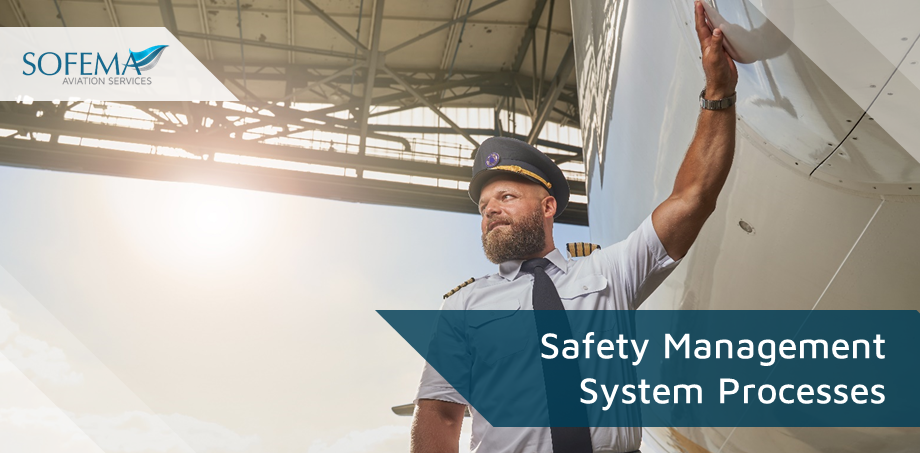A review carried out by Sofema Aviation Services (SAS) considering the Safety Management System Processes within the Management System Compliance Audit
Introduction
The European Union Aviation Safety Agency (EASA) Part 145 pertains to the requirements for maintenance organizations. While Part 145 primarily focuses on maintenance standards and procedures, the integration of a Safety Management System (SMS) is crucial for ensuring the overall safety of operations.
The goal is to ensure that safety is an integral part of all operations and that potential risks are identified and managed effectively.
An SMS in the context of aviation is a systematic approach to managing safety, including the necessary organizational structures, accountabilities, policies, and procedures. Here are the key processes involved in an aviation SMS under the EASA framework:
Safety Policy and Objectives:
- Establishing a safety policy that is endorsed by top management.
- Clearly defining roles and responsibilities related to safety.
- Setting measurable safety objectives.
Safety Risk Management:
- Hazard identification: Proactively identifying potential hazards in operations.
- Risk assessment and mitigation: Evaluating the risks associated with identified hazards and determining appropriate measures to mitigate or eliminate those risks.
Safety Assurance:
- Safety performance monitoring and measurement: Using safety metrics and indicators to monitor the performance of the SMS.
- Management of change: Ensuring that changes (e.g., in procedures, equipment, or personnel) are managed in a way that does not adversely affect safety.
- Continuous improvement of the SMS: Regularly reviewing and updating the SMS to ensure its effectiveness.
Safety Promotion:
- Training and education: Ensuring that all personnel are adequately trained and aware of safety policies, procedures, and their roles in the SMS.
- Safety communication: Promoting a positive safety culture through effective communication about safety issues, lessons learned, and best practices.
Emergency Response Planning:
- Developing and maintaining a plan to ensure a timely response to emergencies.
Documentation and Record Keeping:
- Maintaining documentation related to the SMS, including policies, procedures, risk assessments, and training records.
- Ensuring that safety data and reports are recorded, stored, and easily retrievable.
Safety Reporting:
- Establishing a system where employees can report safety concerns, incidents, or potential hazards without fear of reprisal.
- Analyzing safety reports to identify trends and areas for improvement.
Safety Culture:
- Promoting a culture where safety is a primary concern, and employees feel empowered to speak up about safety concerns.
- Encouraging a just culture where mistakes are seen as opportunities for learning rather than solely for punishment.
Next Steps
Follow this link to our Library to find & download related documents for Free.
Please visit www.sassofia.com or www.sofemaonline.com for questions and comments please email team@sassofia.com
Tags:
Emergency Response Planning, European Union Aviation Safety Agency (EASA), Management System, Part 145, Safety Culture, Safety Management System Processes, Safety Risk Management, SAS blogs, SAS Library, System Compliance Audit




